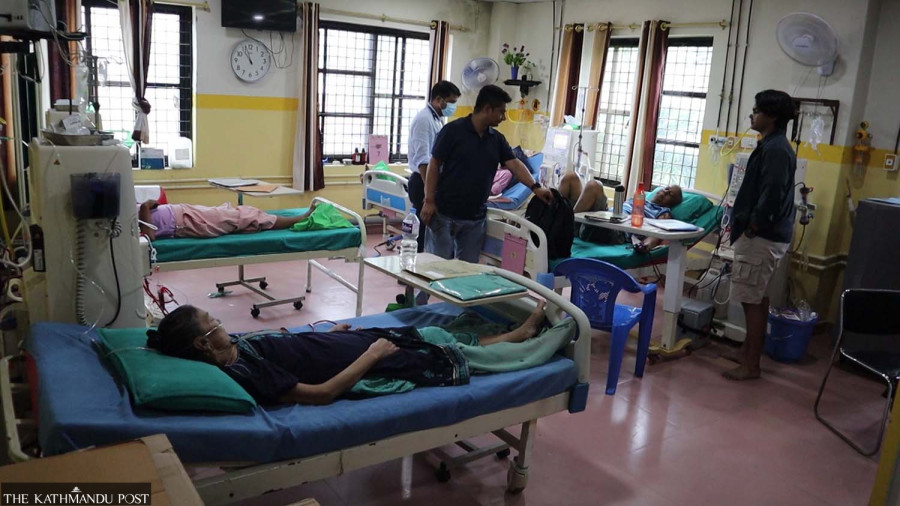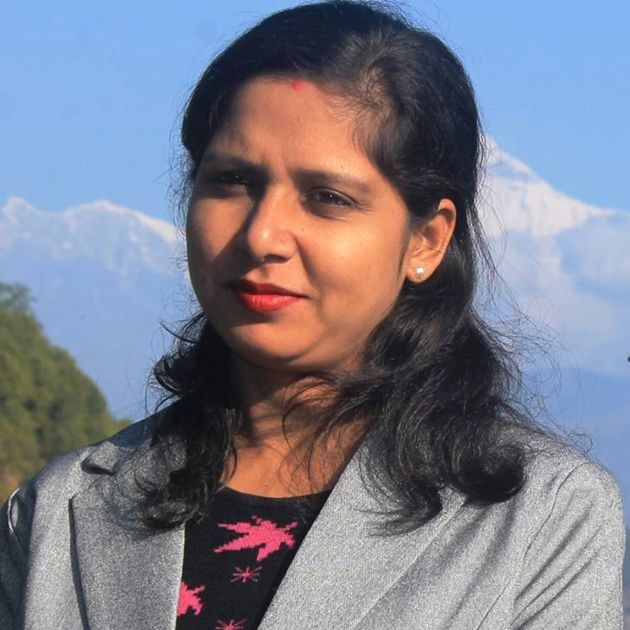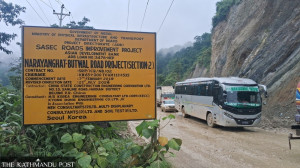Lumbini Province
Manpower shortage affects health services in Lumbini
Hospitals have not been built in 89 local units out of 109 under the ‘one municipality, one hospital’ programme.
Amrita Anmol
Four years ago, the federal government introduced an ambitious plan to build one 15-bed hospital in every local unit across the country.
Out of the 109 local units in Lumbini Province, 89 have not built hospitals yet. Only Mandabi Rural Municipality in Pyuthan started constructing a hospital building while 88 others have not even started the work.
In some cases, there is a dispute between the people's representatives over where to build the hospital. As a result, the people in rural areas of the hill districts of the province, where hospitals are few and far between, have to go far even for the treatment of minor diseases and injuries.
“I have heard several speeches that a hospital would be built in every local unit, but I don’t see anything happening about it,” said Sita Sunar of Bagdula in Pyuthan Municipality-9. “There is no hospital nearby, and people are deprived of health facilities in the rural areas. People have to travel 9 km to reach the district hospital in Pyuthan.”
Recently, modern techniques of health treatment have been introduced to private health institutions in major towns and cities of the province. But the problem of the rural folks remains the same. They are forced to suffer as the government’s plan to operate a hospital in each local body is left in limbo.
According to Bhoj Prasad Shrestha, former health minister of the Lumbini Province, the health sector did not grow mainly due to the lack of coordination among the three governments and their reluctance to give continuity to the plans initiated by the previous government.
In Lumbini, there are 13 hospitals and 13 Ayurveda treatment facilities. For them, the provincial government has been allocating about Rs4 billion every year. Out of the 1,249 posts sanctioned for these health institutions, 676 remain vacant. Given the data, a specialist doctor looks after 104,709 patients, a nurse has 3,539 in her share and there is a medical officer for 54,625 people on average.
Binodraj Giri, chief at the province health directorate, said posts in various public health institutions remained vacant as the provincial public service commission was yet to be established to select personnel.
“The country moved to federalism, the number of health institutions increased and the doctors were divided between the federal and provincial governments,” Giri said. “But despite the rise in the number of health institutions and health services, the number of doctors and health workers remains the same. The shortage of human resources causes problems in delivering quality health services.”
According to Giri, there are 1,530 beds in Lumbini including the federal and provincial hospitals. Due to lack of skilled manpower, some hospitals are unable to operate equipment for ICU and HDU services.
Bheri Hospital, Rapti Academy of Health Science and Khajura Cancer Hospital are under the federal government. The federal government allocates around Rs1 billion to them annually. But the people are forced to visit private health institutions as they do not get good services at public hospitals, which reel under shortages of human resources and equipment.
“Due to the lack of manpower, hospitals have to rely on helpers and junior health workers,” said Munshi Prasad Majhi, the health unit chief in Sammarimai Rural Municipality, Rupandehi. “Even though the scope of healthcare has widened in the hospital, we have not been able to provide the services due to lack of manpower.”
Lately, the problem of non-communicable diseases is increasing in the province. The Lumbini provincial government has been providing Rs200,000 per person for heart valve replacement, kidney transplant and cancer treatment and Rs50,000 per person per year for asthma and bronchitis patients.
From the financial year 2020-21, hundreds of patients have received financial support from the government, including 1,473 patients with asthma and bronchitis and 278 people with cancer, heart and kidney diseases.
Provincial Health Minister Indrajit Tharu said that the provincial government prioritised improving physical infrastructures and upgrading the hospitals. “But we have not achieved our goal as expected due to the shortage of required human resources,” he added.
According to the data of the provincial health directorate, out of the 12 districts of the province, except Rukum (East), 11 districts have operated maternity services with surgery. There are 91 percent of institutional deliveries and 87 percent of deliveries by skilled manpower. However, the infant mortality rate in Lumbini is higher than the number of the whole country. Neonatal mortality rate is 30 per thousand live births, infant mortality rate is 42 per thousand and 45 people under five years of age die per thousand.




 5.81°C Kathmandu
5.81°C Kathmandu














